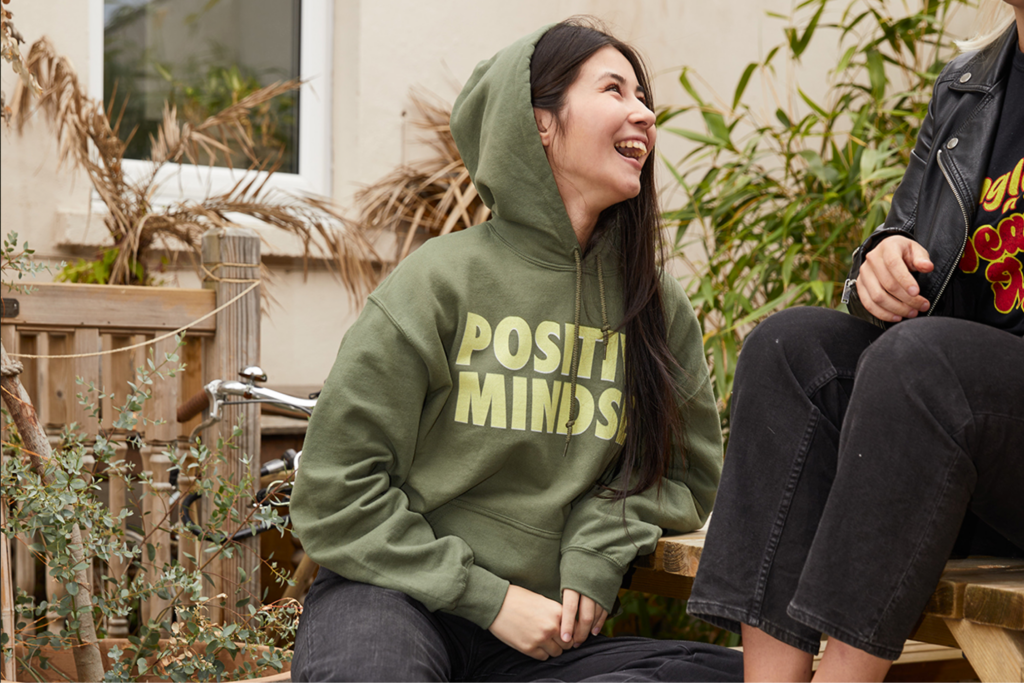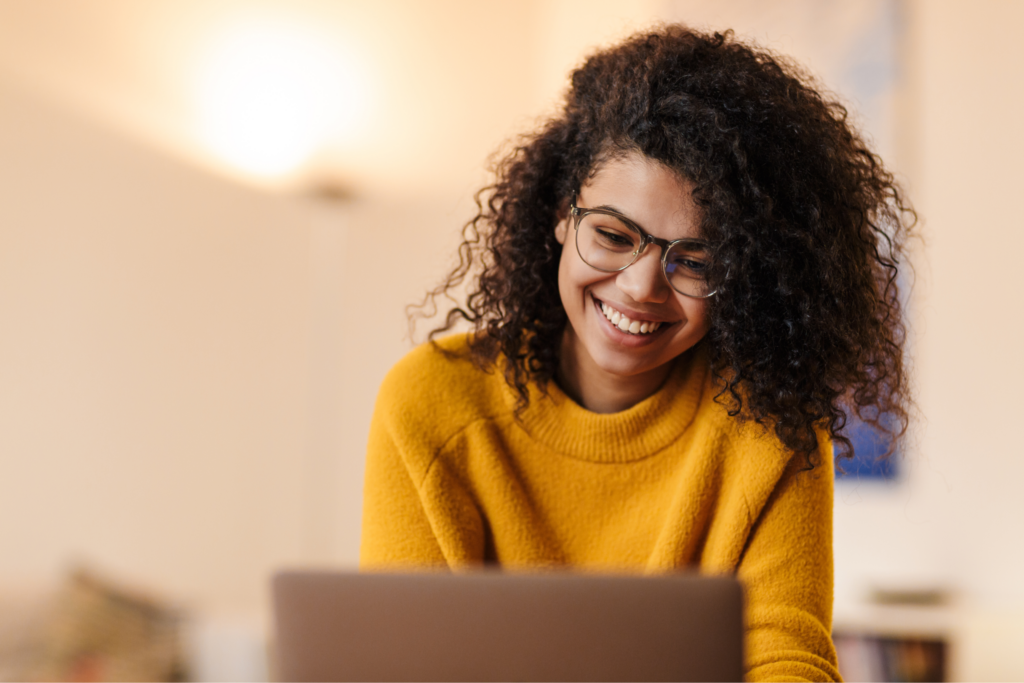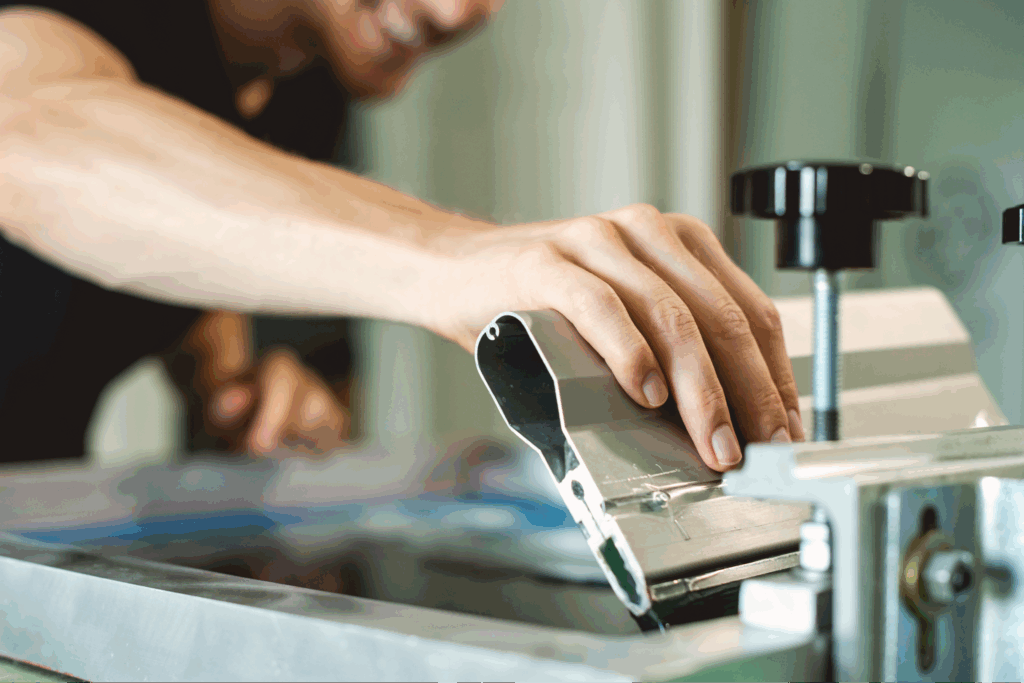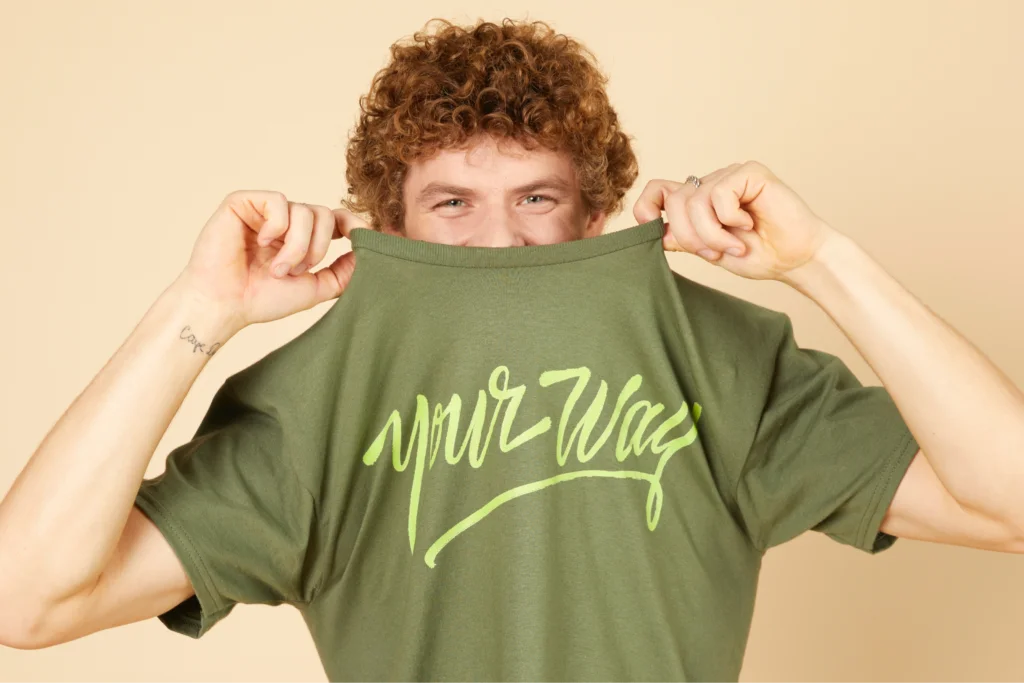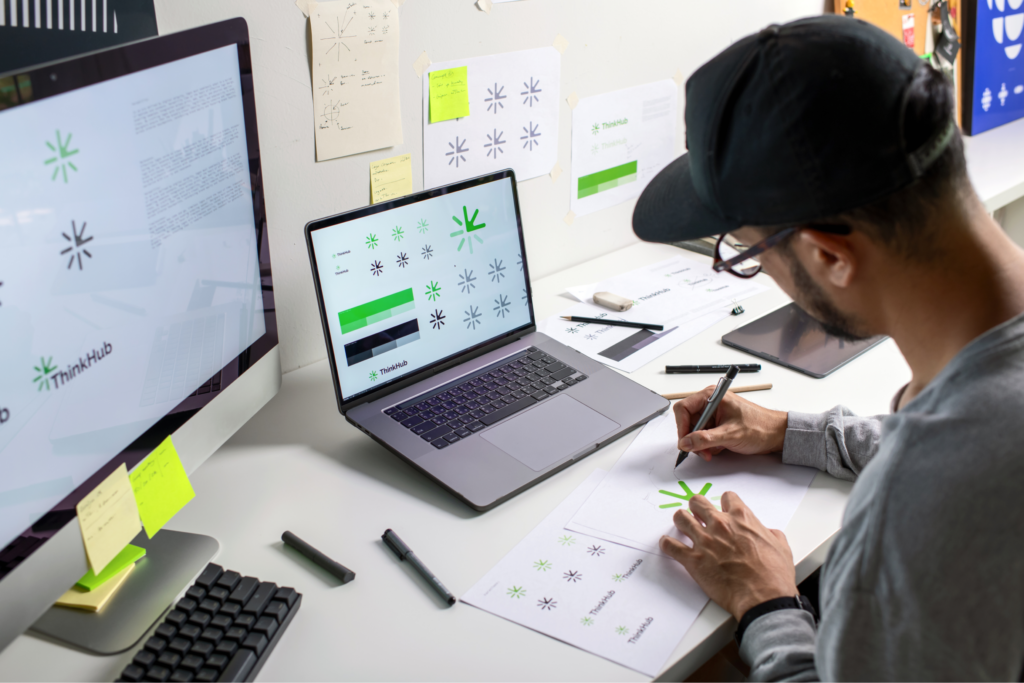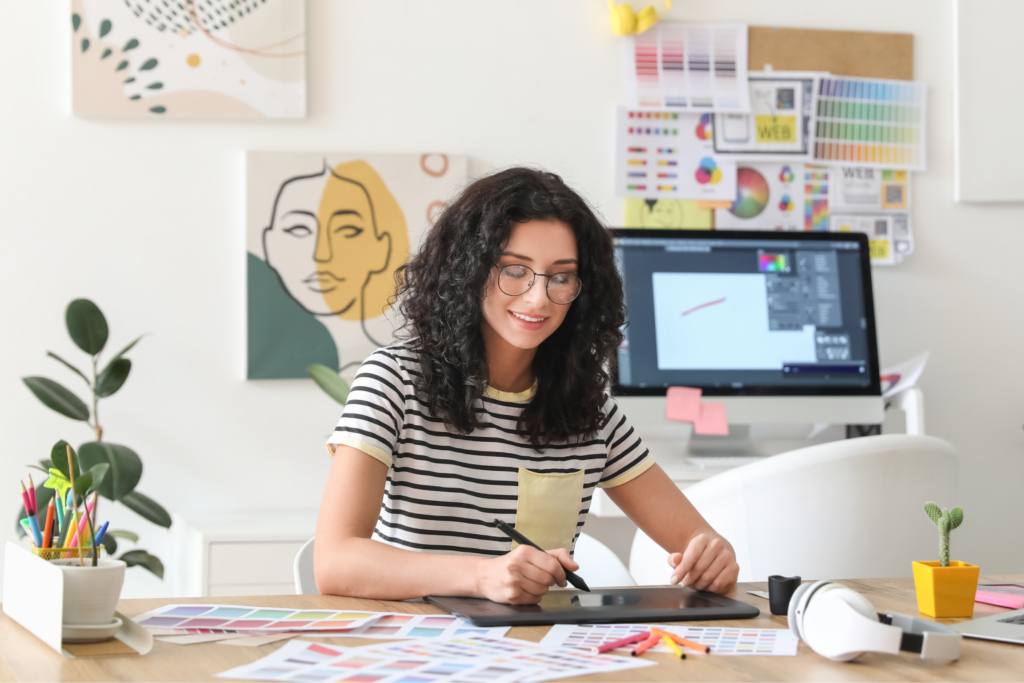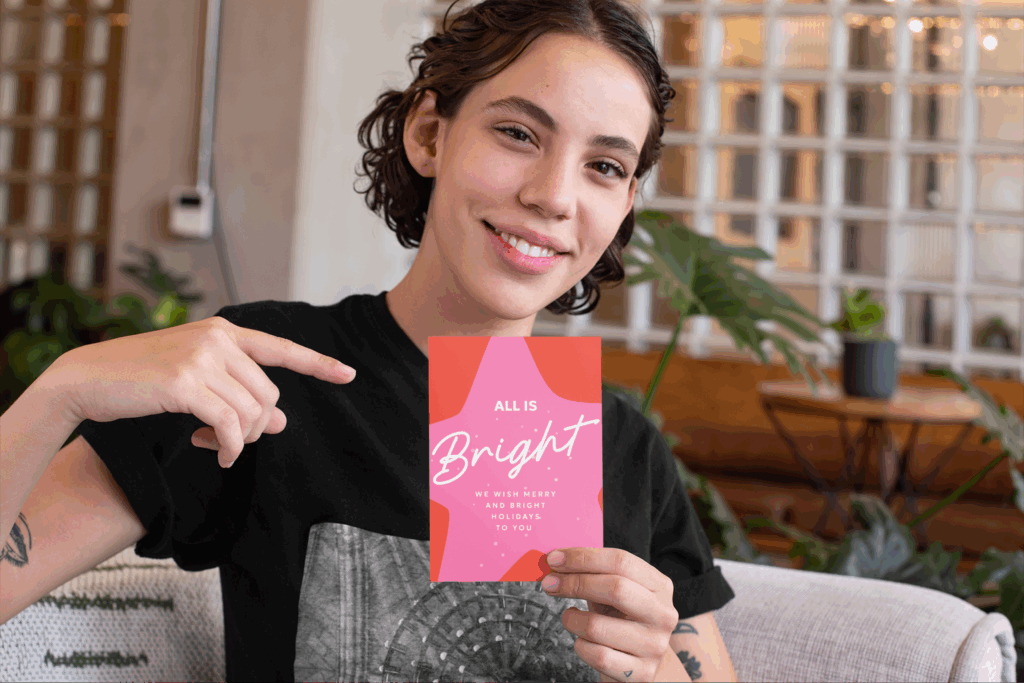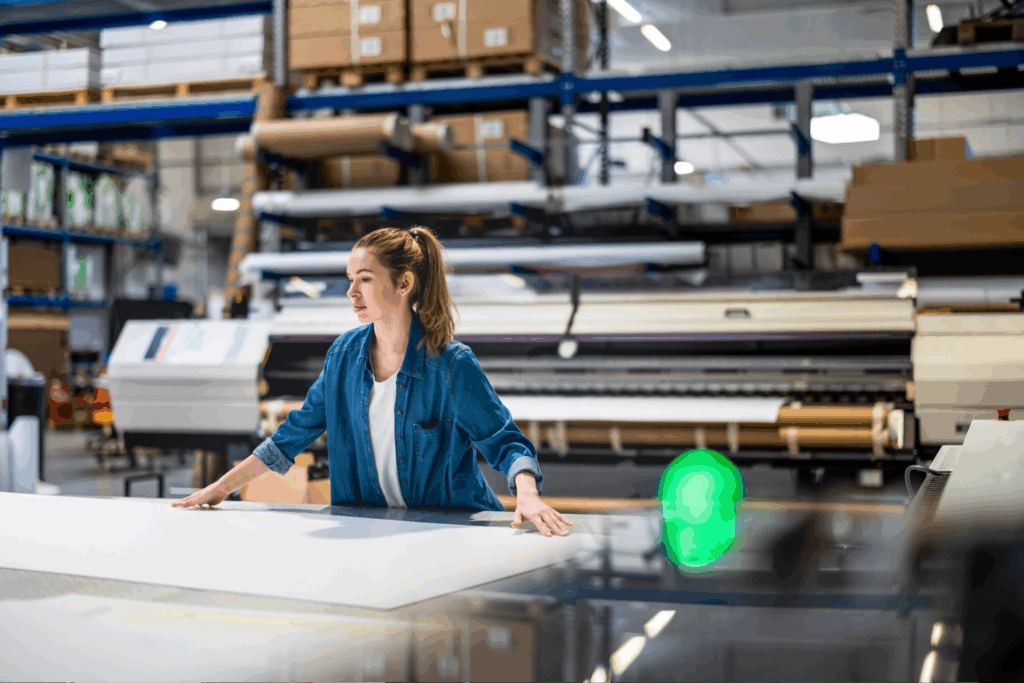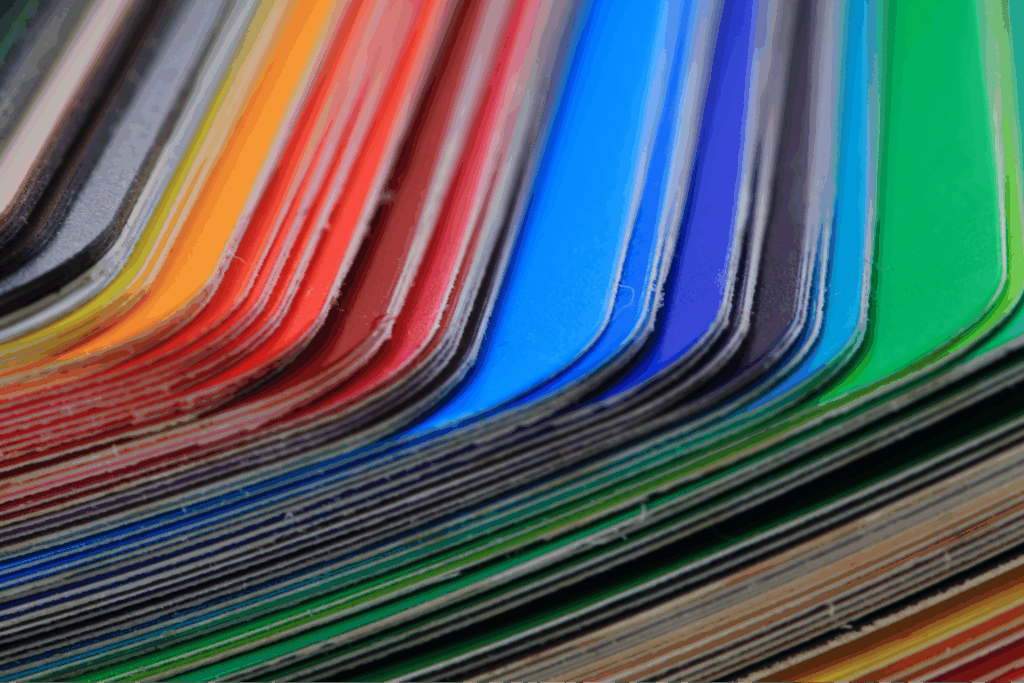Bring your design ideas to life
Artificial intelligence (AI) has significantly impacted the digital world, and AI-generated art is one of its most exciting outcomes.
You can provide details and describe a scene, object, or style through text to generate unique visuals in minutes using cutting-edge AI tools and art generators.
In this guide, we’ll cover AI art prompts, how they work, and how to create effective ones for stunning AI-generated art. We’ll also review the best AI art tools, share practical AI art prompt examples, and discuss common legal and ethical questions.
What are AI art prompts, and how are they revolutionizing digital art?
AI art prompts are short, descriptive text inputs you provide to an AI-powered art generator. These inputs instruct the AI to create artwork that aligns with the details and specifications in the prompt. The AI uses complex machine learning algorithms to interpret your words, pulling from vast datasets to produce unique AI-generated art based on your request.
For example, a prompt like “a colorful sunset over a mountain range with a glowing city skyline in the distance in cinematic lighting” will turn text into a picture that matches those details.
AI art generators are easy to use and very accessible, allowing anyone to create unique, high-quality digital art without needing special artistic skills.
Provide detailed descriptions and unleash your creativity in endless ways by mastering the art of crafting AI art prompts that work.
The power of AI in art: Why use AI art prompts?
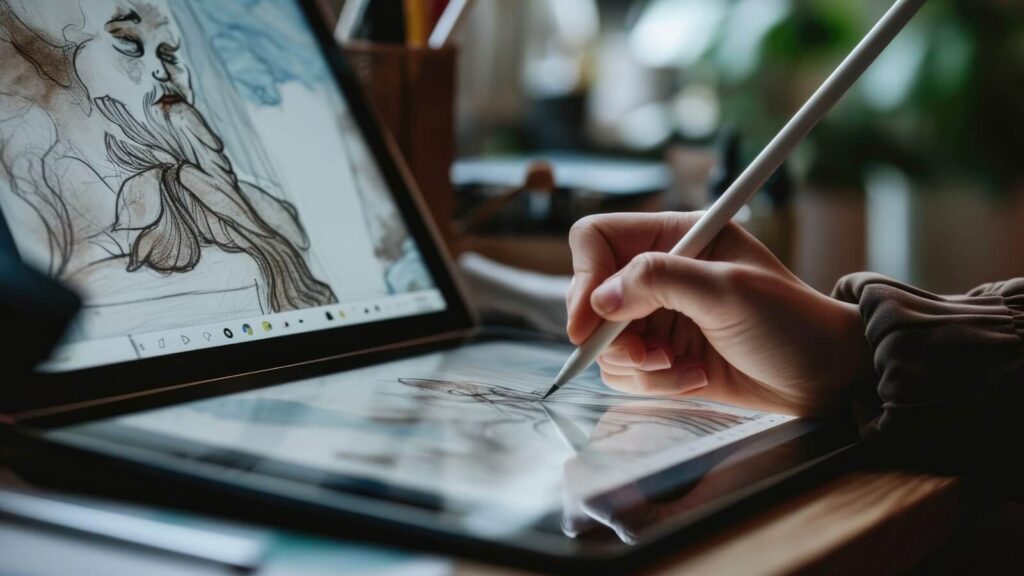
Here’s how using AI-generated art and AI art prompts is changing the digital art world:
- Instant creativity: AI art generators allow you to create high-quality art almost instantly. Whether looking for a cool AI art prompt to produce surreal landscapes or an abstract concept, the process is simple.
- Unlimited possibilities: From fantasy realms to futuristic cityscapes with vibrant colors, AI can create images in any artistic style. The only limit is your imagination.
- Accessible: You don’t need to be a professional artist to create superb artwork. Anyone can generate AI art with the right prompt.
- Efficient workflow: AI-generated art can save designers, game developers, and digital marketers time by providing rapid concept designs, mockups, and project visuals.
AI art tools make the creative process more dynamic and accessible, enabling beginners and professionals to explore new digital art fields.
Crafting effective AI art prompts: A step-by-step guide
Let’s look into how to craft the best prompts for AI art generators. Good prompts guarantee that the AI produces images that meet your expectations.
1. Be specific
Details are key to making impressive AI art.
Instead of saying “a beautiful landscape,” improve the prompt by providing context: “a lush, green forest with tall pine trees in dark tones, a river flowing through it, and a snow-capped mountain in the background during a bright sunrise.”
Specific AI art prompts instruct the AI model on color schemes, composition, lighting style, and subject matter, resulting in a more accurate and visually appealing digital painting.
2. Include style and artistic influence
AI image generators can mimic diverse styles, including impressionism, realism, and even the aesthetics of famous artists such as Van Gogh or Picasso. If you want your digital painting to have a certain artistic flair, specify this in your AI art prompt.
For example, “a landscape of rolling hills at sunset, in the style of Van Gogh, with swirling, expressive brush strokes.”
Style prompts are especially useful if you want to recreate the feel of traditional art prompts with a modern AI twist.
3. Use action words for dynamic scenes
Do you want your AI-generated image to express action or movement? Use verbs.
An AI art prompt like “waves crashing against rocky cliffs during a storm, with seagulls flying overhead” will generate a dynamic image filled with movement and energy.
The more you describe scene activity for the AI art generation, the more lifelike and vibrant the result will be.
4. Play with lighting and mood
AI art generation tools are excellent at interpreting mood, so try to describe the atmosphere of your scene in as many details as possible. Whether you want a dark and eerie vibe or a bright and joyful dynamic composition, adding lighting and emotions to your prompt can make a big difference.
For example, “a shadowy forest at dusk with glowing fireflies illuminating the trees, creating a mystical atmosphere.”
5. Experiment with surreal and abstract ideas
One of the most exciting aspects of digital art creation is the ability to construct things that don’t exist in the real world. Experiment with abstract or surreal AI art prompt ideas. For example “an alien landscape with purple mountains, floating islands, and a river made of molten gold under a sky filled with two suns.”
Whether using prompts for AI art or creating your own, prompt templates can help you structure them effectively.
Best AI tools for creating art from prompts
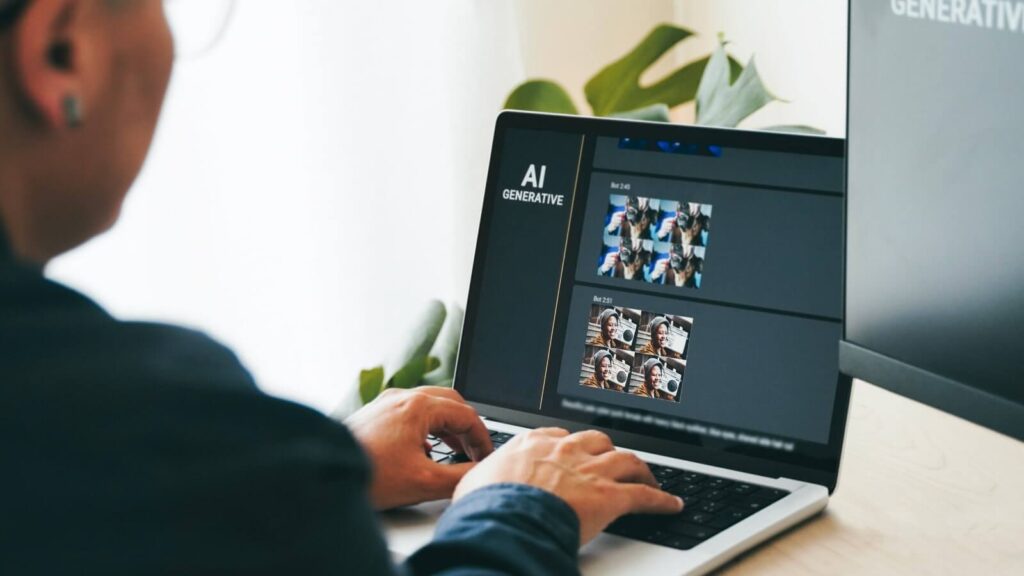
Now that you’ve mastered crafting the best prompts for AI art generators, you’ll need the right tools to bring your ideas to life. Whether using a paid or free AI art generator, it’s possible to create stunning artwork with just a few clicks.
Here are some of the most popular tools for creating AI-generated masterpieces from text descriptions:
1. MidJourney
MidJourney is among the most recognized names in the AI art world. Its user-friendly interface and ability to create visually striking art in vibrant colors make it a favorite among creatives.
Read more. How to use Midjourney and our guide on Midjourney prompts
2. DALL·E 2
DALL·E 2, developed by OpenAI, is a powerful tool that excels at creating high-quality digital art and unique, intricate designs. Whether you want a realistic portrait or a dreamlike landscape, it can handle everything your unique and cool AI art prompts ask.
3. Stable Diffusion
Stable Diffusion, an open-source tool, is excellent at generating realistic imagery from text prompts. Its flexibility allows users to create everything from detailed landscapes to futuristic cities, making it a go-to option for anyone looking to experiment with fun prompts for AI art.
4. Artbreeder
Artbreeder lets users combine and change pictures based on style, color, and composition. This AI-powered platform is excellent for artists seeking greater control over their work, as it allows users to tweak and refine visuals after the initial prompt.
5. Deep Dream Generator
Deep Dream Generator, one of the early players in the AI art world, is well-known for its ability to generate highly detailed and often psychedelic images. Users can input prompts to guide the tool, but part of its charm is letting the AI take creative liberties.
Each of these art tools has unique features and creative possibilities, enabling artists, designers, and hobbyists to create diverse artwork. Whether you want a realistic rendering or something more abstract, there’s a tool for every need. Use your best prompts for AI art and enjoy the generated results.
9 best prompts for AI art to spark your creativity
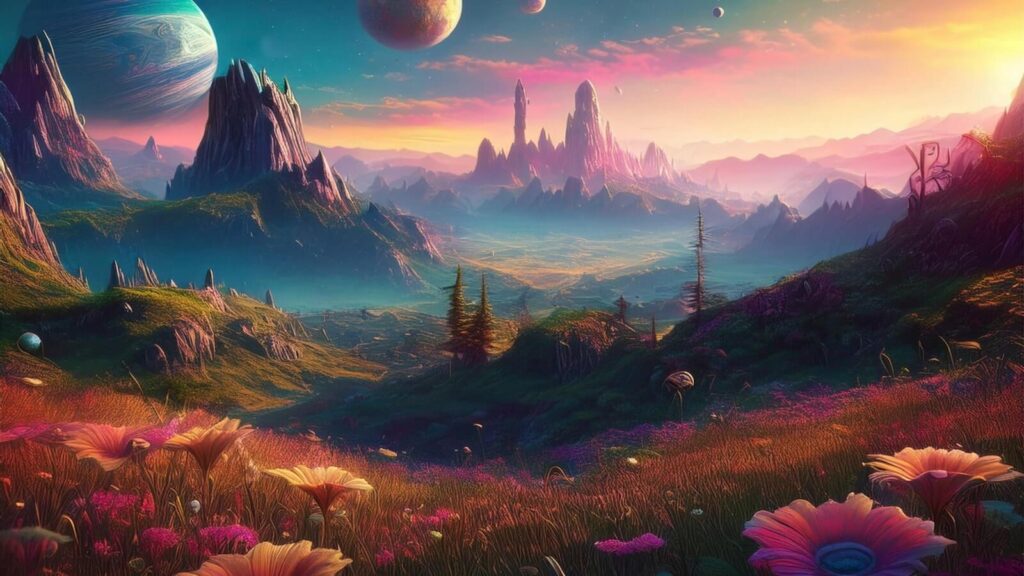
Try these following tips on AI art prompts to craft authentic digital art. These examples show various themes and styles, demonstrating how diverse AI-created art can be.
- Fantasy landscape: “A vast desert with glowing blue sand dunes and a giant moon in the sky, with a lone traveler walking towards a distant city of crystal towers.”
- Surreal portrait: “A woman’s face made entirely of swirling clouds, with her eyes as glowing stars, set against a backdrop of a twilight sky.”
- Futuristic cityscape: “A cyberpunk city at night, with neon-lit skyscrapers, flying cars, and people walking on illuminated streets wearing futuristic attire in bright colors.”
- Mythical creature: “A golden phoenix rising from a pool of lava, its wings glowing with embers, under a dark stormy sky.”
- Abstract art composition: “Swirling lines of red, gold, and black in a chaotic yet harmonious dance, with geometric shapes floating in the background.”
- Pop art style: “A retro-style poster featuring a bright, colorful comic-book aesthetic, with bold lines and speech bubbles reminiscent of 1960s Pop Art.”
- Glitch art: “A distorted, pixelated cityscape, with neon lights flickering and digital glitches creating a surreal, fragmented visual effect.”
- Abstract painting: “A vibrant, modern art piece with bold, sweeping brush strokes in blue, red, and yellow, evoking raw emotion and movement.”
- Oil painting: “A classical oil painting of a serene countryside, with lush green meadows, soft lighting, and realistic details of the trees and sky.”
These are just a few AI art ideas you can explore with an AI art generator form our list above.
Moreover, by combining art movements and exploring diverse themes, you can even generate images with fascinating effects, such as optical illusions. So, whether you want to create a digital version of a classic oil painting or experiment with various artistic styles and visual art forms, AI gives you all the freedom.
How to sell AI art: Tips and strategies
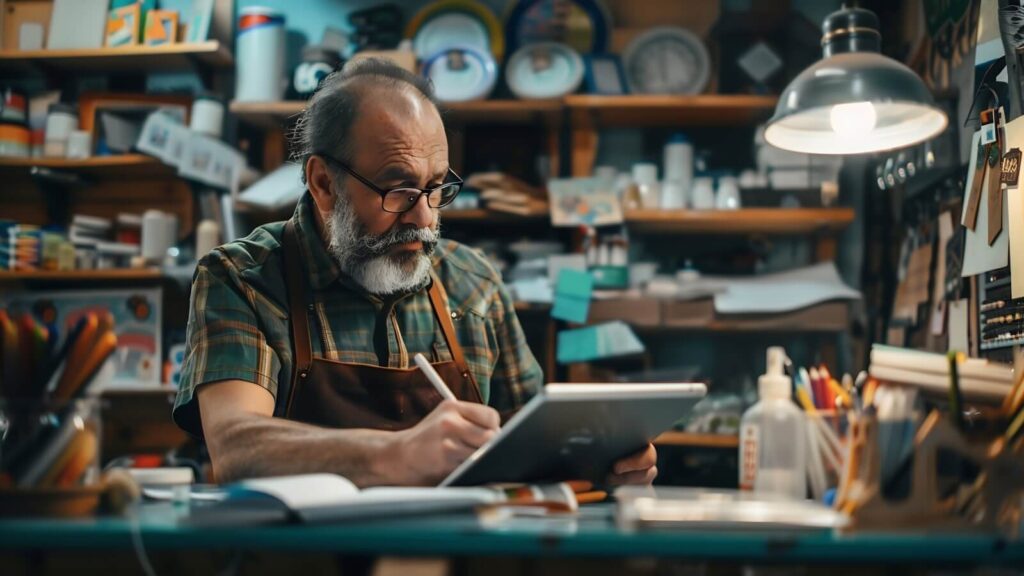
Now that you know how to create art with the help of AI, it’s time to make the most of it. Here are some effective tips on how to promote your digital art.
1. Create a portfolio site
Creating a professional website to display your AI art can help you reach a wider audience. Platforms like Behance, DeviantArt, or even a personal blog offer the perfect way to showcase your portfolio. Optimize your website for search engines to attract potential buyers or collaborators.
2. Be active on social media
Social media platforms like Instagram, TikTok, and Pinterest are excellent for showcasing your AI art. Use trending hashtags like #AIart and #DigitalArt to reach a larger audience. Posting frequently and engaging with your followers can help you build a strong community of art lovers.
3. Explore print-on-demand platforms
Platforms like Printify, Redbubble, and Society6 allow you to turn your AI-generated designs into merchandise like t-shirts, posters, and mugs. This can generate additional revenue streams, allowing you to monetize your art.
Printify has a built-in AI image generator that lets you create stunning designs to put on more than 1000 products you can later sell online.
4. NFTs and AI art
Non-fungible tokens (NFTs) allow artists to sell their digital works as unique, blockchain-verified assets. Many AI artists are exploring this exciting way to sell digital art.
Read about AI in eCommerce and get inspired to start a business.
Legal and ethical considerations in AI art
As AI-created art gains popularity, there are several important legal and ethical questions to consider.
Is AI art legal?
Yes, creating AI art is generally legal, but ownership is a gray area. While most AI art platforms give users full ownership of the art they make, some keep usage rights. Always read the terms and conditions before using any tool to understand your rights as a creator.
Ethical concerns in AI art
AI-created art raises ethical concerns about originality and human creativity. Some people worry that AI could make traditional art less valuable, while others see it as an exciting tool that makes it easier to be creative.
In the end, it’s all about balance. Artificial intelligence tools should be used to enhance, not replace, human creativity.
FAQ
The best text prompts are specific, detailed, and creative. They include key elements such as subject matter, style, and colors. For example, “a futuristic city at dusk, with glowing skyscrapers and flying cars” will produce a more detailed result than a simple “futuristic city.”
The most popular AI prompts include fantastical landscapes, surreal portraits, and futuristic cityscapes. These prompts allow for a wide range of creative expression, making them favorites among artists exploring digital art.
Yes, creating art with AI is legal. However, ownership rights vary depending on the platform. Although most AI art generators allow users to own the artwork they create, it’s advisable to always check the terms of any service before using it.
The best image prompts are clear and descriptive, focusing on detail, action, and style. For example, a prompt like “a mystical forest at night, illuminated by glowing orbs and inhabited by mythical creatures” is likely to produce a stunning visual due to its specificity and creativity.
Final thoughts on how to write AI art prompts
AI prompts are a powerful futuristic technology that can unlock unlimited creative potential. AI-crafted art provides an innovative and user-friendly way to explore new artistic possibilities regardless of your skill level.
Bring your wildest artistic visions to life with the right prompts and tools!




